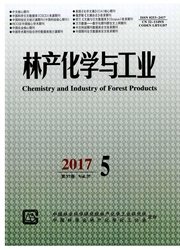

 中文摘要:
中文摘要:
木质纤维素是自然界中储量最大的可再生资源物质,由于木质素难以降解,阻碍了木质纤维素物质的生物转化利用,并且是相关工业生产中毒性污染物质的主要来源。自然界中存在的白腐真菌对芳香族化合物具有很强的降解能力,具有完整的木质纤维素降解体系,对这一体系的研究成为实现木质纤维素资源转化利用的关键,木腐微生物的存在,使人类通过廉价手段降解和利用木质纤维素成为可能。研究木腐微生物降解木质纤维素的机制,研究木质素降解酶类不同组分以及和小分子活性物质之间协同作用机理,筛选培育高效降解木质纤维素的菌种和木质素降解酶,为实现工业化转化利用木质纤维素奠定基础。
 英文摘要:
英文摘要:
Lignocellulose is the largest renewable material in nature. For hard to degradation, lignin interfered bioconversion of lignocellulose and brought the main toxic pollutants in relative industry production. White rot fungi in nature have the strong ability to degrade aromatic compounds. So to realize the biodegradation system should be the key for resource conversion of lignocellulose. By using wood rot microorganisms to achieve degradation and utilization of lignocellulose in cheap way. Investigation the mechanism of lignocellulose degradation by wood rot fungi, the synergistic effect of ligninolyfic enzymes and nonenzymic low molecular weight materials and, to select high cellulignolytic fungi and enzymes should promote the conversion and utilization of lignocellulose in industry scale.
 同期刊论文项目
同期刊论文项目
 同项目期刊论文
同项目期刊论文
 期刊信息
期刊信息
